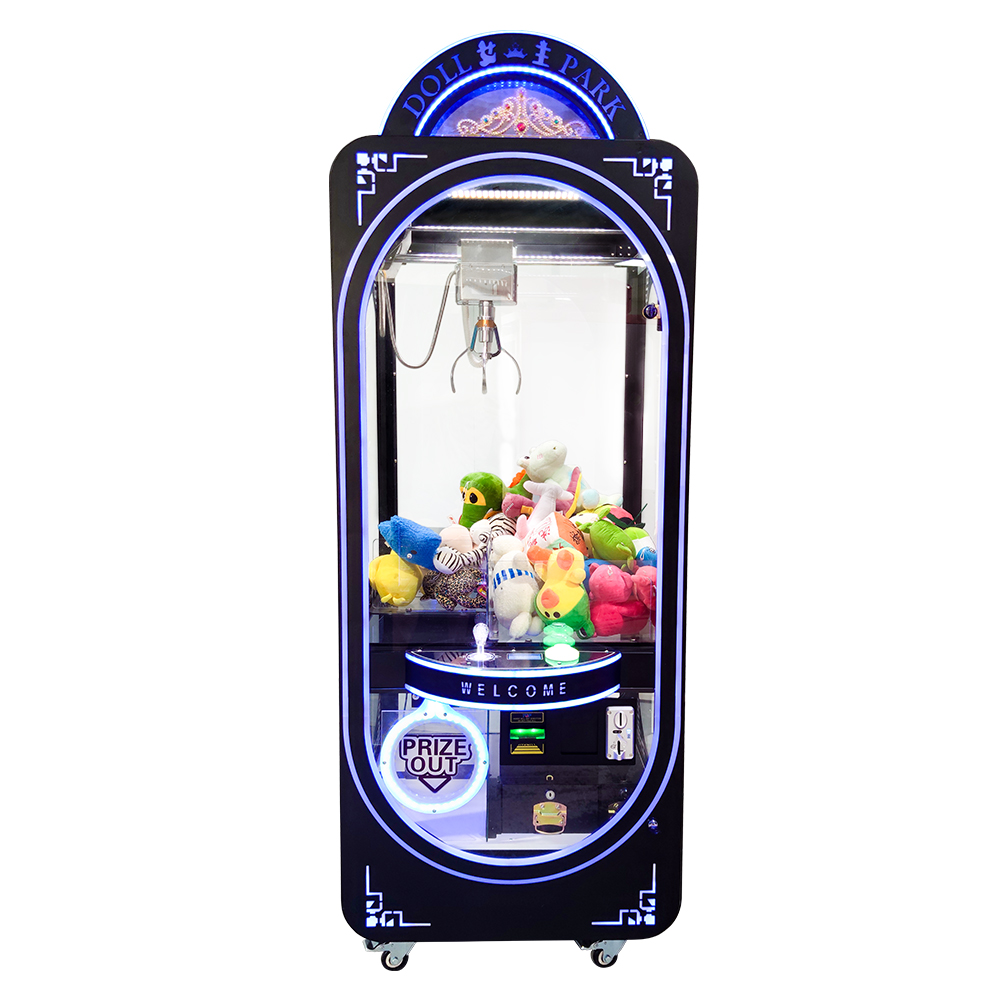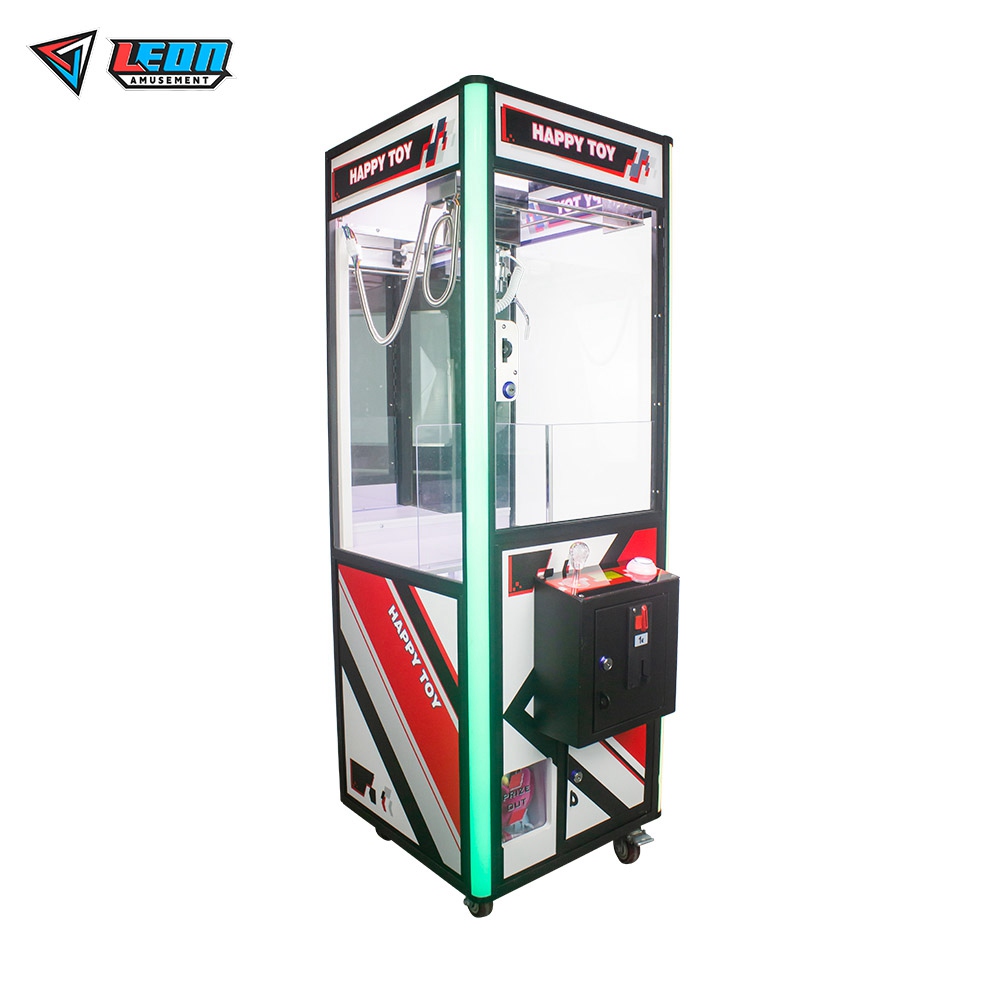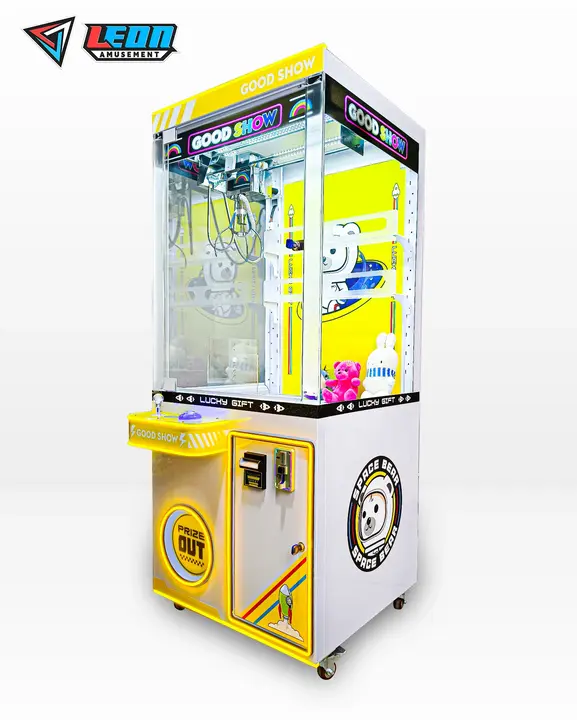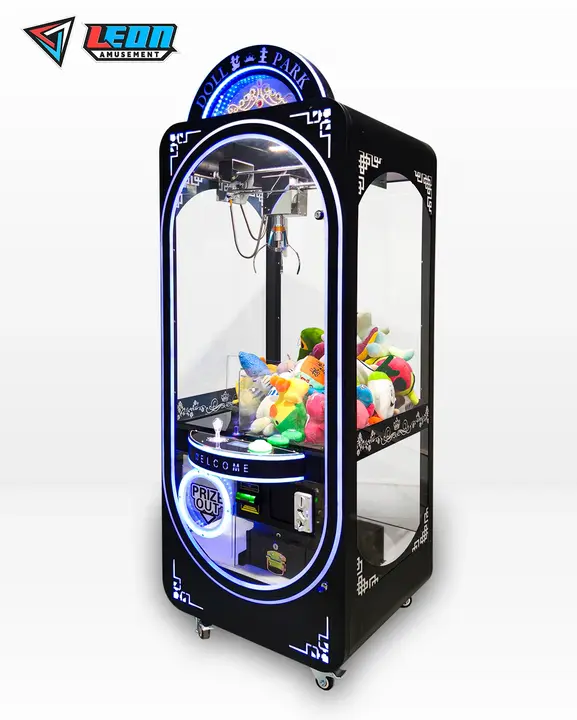Regular maintenance of your claw machine, including cleaning, inspections, and lubrication, can reduce downtime by 30% and extend its lifespan by up to 5 years.
Table of Contents
ToggleRegular Cleaning
Exterior Cleaning
First, take a warm damp cloth to the exterior surfaces of your scanner. You will be surprised how much dust and grime tend to accumulate on them! The glass panels especially need to be paid attention as clear visibility is very important for the players. Clean the glass with a glass cleaner for streak-free shine!
Interior Cleaning
Open the claw machine and vacuum the inside very carefully to get rid of any dust that has collected. Lay particular attention to the area around the claw mechanism and prize chute. Dust can cause hindrance in the working of the machine.
Cleaning the Claw Mechanism
It had a claw mechanism on the front; that was what made it alive When free, use a soft brush to wipe the claw and its parts of any dust or dirt.Check the claw for signs of wear and tear In any case where you detect resistance or damage, take the necessary action without
Prize Area Maintenance
Make sure that the prize area is clear of anything blocking it Take out anything that could be jamming it and use a cotton swab to clean the prize sensors of dust. Keep the sensors clean with a dry cloth to make sure that the mechanisms detecting prizes operate properly.
Coin and Bill Acceptors
Make sure that yours are not getting backed up and cleaned them out to prevent errors. A cleaning card for the bill acceptor and a soft brush for the coin acceptors will help clean these payment components. When acceptors are operating correctly, this means that the user experience will be a lot smoother and the revenue will also remain stable.

Routine Inspections
Regular inspections are necessary in order to keep your machine efficient and dependable. This is how you do a proper inspection:
Mechanical Components Check
Check to see if all of the claw machine’s moving parts are functioning properly. Include in your inspection, the claws’ mechanism, gears and pulleys as well Check to make sure that there are no signs of wear, misalignment or loose components. Should you find any loose screws or bolts, or feel that some component part has gotten a little worse for wear over time, address this problem without delay.
Electrical System Inspection
Do the same check before painting. Check wiring and all of them are in good condition. A multimeter can be used to test the voltage levels and check if they are as per the specifications of the manufacturer. Since fire can be so unpredictable, faulty wiring that causes intermittent issues or complete failures should never wait on inspection.
Software and Firmware Updates
Make sure the machine’s software and firmware are current. Manufacters always keep updating the These emitted updates can optimize work potentially and sucre your system. Keep checking a manufacturer’s website for updated drivers and install them as directed. …to prevent or pre-empt bugs and to make the user experience better.
Prize Delivery System
Examine how well the prize delivery mechanism works. check drop prize mechanism for couple of attempts to make sure it doesn’t jam or stops giving prizes due to some error. The project is in the testing stage. If more than a report’s worth of adjustments are needed to restore consistent performance, we will file it away for another time as there may also be problems with other parts of the model architecture.
Control Panel and Interface
Inspect the control panel and user interface Test all Buttons, joysticks and touch screen functions. Clean Control Panel: Always clean the control panels to whiff away any dust or grime that can hinder the workings of these appliances.

Software Updates
Importance of Regular Updates
Software updates correct issues, upgrade software, add new features to a program. Be sure to follow along with regular updates, as they help your claw machine run effectively and efficiently. Manufacturers regularly issue updates in order to improve the end user experience or quickly patch bug that were recently discovered.
Checking for Updates
If you’re going to check for software updates every 3rd or last Thursday of the month, continue doing so as a routine. If it isnt available through that menu option, then you should check the manufacturer’s website or call their support team to find out what version of software they are on, so you can update your device too. If the machine has an automatic update feature, make sure it is turned on.
Backing Up Data
Make sure to backup your machine’s data before attempting any updates. Everything! User settings, game scores and custom configurations. Save the backup files onto a USB drive, or dropbox. Now if anything goes wrong while updating your machine, you need this to revert back to the original state of the VM.
Installing Updates
Users are advised to follow manufacturer’s instructions for applying any updates Which usually means pulling the update file to a USB drive, then plugging that into the machine. Some systems can be set to update mode in a specific sequence: please follow each steps properly to avoid issues
Component Lubrication
Proper lubrication of your claw machine’s components is essential for maintaining smooth operation and extending the lifespan of the machine. Here’s a detailed guide on how to effectively lubricate the critical parts:
Identifying Key Components
Start by identifying the key components that require lubrication. These typically include the claw mechanism, gears, pulleys, and sliding tracks. Focus on parts that are frequently in motion to ensure they operate without friction and wear.
Choosing the Right Lubricant
Select a high-quality lubricant specifically designed for machinery. Avoid using general-purpose oils, as they may not provide adequate protection. Silicone-based or lithium grease lubricants are often recommended for claw machines because of their durability and effectiveness.
Lubrication Process
- Power Off the Machine: Always turn off and unplug the machine before beginning any maintenance to ensure safety.
- Clean the Components: Wipe down the components with a dry cloth to remove any dust or old lubricant. This step ensures that the new lubricant adheres properly and works effectively.
- Apply the Lubricant: Use a small brush or applicator to apply the lubricant to the identified components. Ensure an even coating without over-applying, as excess lubricant can attract dust and debris.
- Operate the Machine: After applying the lubricant, manually operate the machine parts to ensure the lubricant spreads evenly. Check for any resistance or unusual noises.
- Wipe Off Excess Lubricant: Use a clean cloth to remove any excess lubricant from the components. This prevents buildup and keeps the machine clean.
Frequency of Lubrication
Establish a regular lubrication schedule based on the machine’s usage. For heavily used machines, lubricate the components every 3 to 6 months. For machines with lighter use, a yearly lubrication might suffice. Keeping track of maintenance schedules can help in planning and preventing unforeseen breakdowns.
Monitoring and Adjustments
After lubricating, monitor the machine’s performance over the next few days. Pay attention to any improvements in operation or new issues that arise. Adjust the lubrication routine as necessary to maintain optimal performance.
Professional Servicing
While regular maintenance is crucial, professional servicing ensures your claw machine remains in top condition. Here’s a detailed guide on leveraging professional services effectively:
Finding Qualified Technicians
use a reputable service provider with experience in arcade machine maintenance. You should also be hiring technicians with certifications from well known organizations or if the manufacturer of the machine recommended them. Professional service providers will be will versed with the requirements of your claw machine.
Regular Service Schedule
Schedule regular service with the same technician. Service is required after every 6 months or one year depending upon the usage of machine. Having professional inspections done often will spot potential trouble before it becomes a catastrophe and expensive breakdown.
Detailed Inspection and Repairs
- Inspect thoroughly: This means not only mechanical and electrical components, software systems but also verify the structure of the machine. Moreover, technicians use special tools to uncover issues that would otherwise be invisible.
- Make all the necessary repairs: We replace any damaged or worn-out parts. Professional servicing also ensures that only top-quality materials are used to repair the machine allowing you to run it much longer.
- Optimize Machine Settings:In this way it can be possible to calibrate the machine settings for optimal performance and user experience. It can include tweaking the strength of the claw, modifications to prize drop methods or changes to software settings.
Documentation and Feedback
Get all work we do documented at the time of a professional service visit. After the certified technician completes servicing the water heater, they should provide a service report (thereby detailing an inspection being conducted and what repairs or recommendations are made for future maintenance). That information, in turn, can be extremely valuable for holistic diagnostics over a machine’s history and future maintenance planning.
Cost-Benefit Analysis
So while professional servicing may come with a price tag, the benefits far outweigh the costs. Routine professional maintenance can squeeze a couple extra years out of the machine’s life-span, decrease down-time between malfunctions, and help ensure overall satisfaction toward earning your organization more in the log run.



